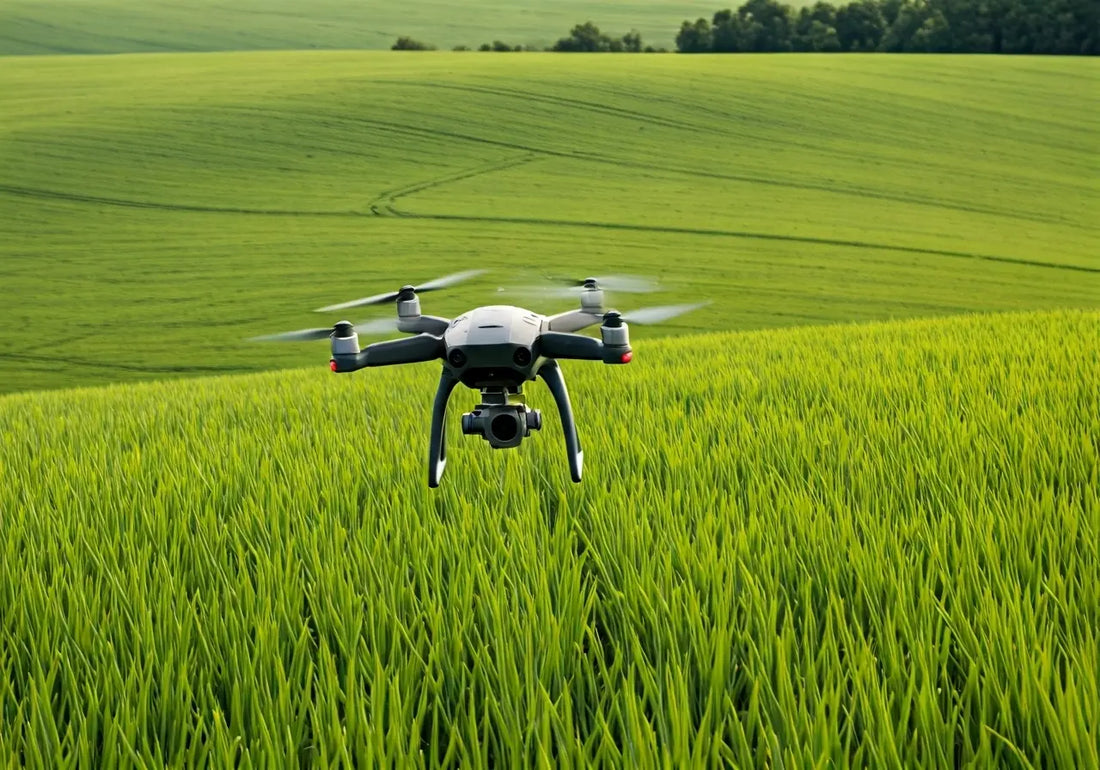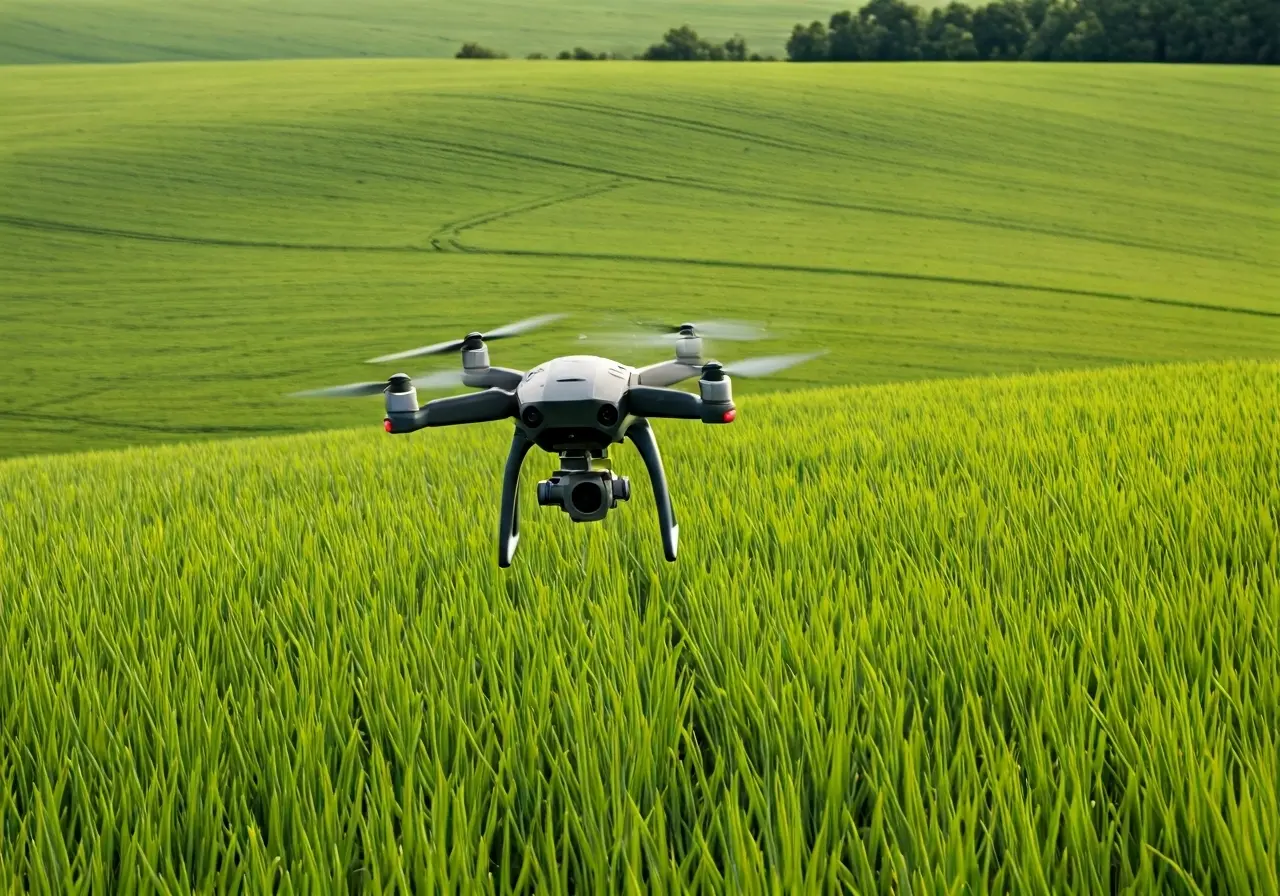
How Drone Pest Control is Revolutionizing Farm Management
Share
In recent years, the agricultural industry has witnessed remarkable technological advancements that are transforming traditional farm management practices. One such innovation is drone pest control. This cutting-edge technology is not only changing how farmers address pest issues but is also enhancing overall farm efficiency and sustainability. In this blog, we will explore the revolutionary role of drone pest control in modern agriculture.
The Rise of Drones in Agriculture
Drones have become increasingly popular in agricultural settings, thanks to their versatility and ability to cover large areas quickly. Initially used for crop monitoring and aerial surveys, drones are now playing a vital role in pest control, providing farmers with a powerful tool to manage their fields effectively.
The integration of drone technology in agriculture marks a shift towards precision farming. This practice emphasizes accuracy and efficiency, ensuring resources are utilized optimally. With their high-resolution cameras and advanced sensors, drones can capture detailed images of expansive fields, offering unprecedented insights into crop health and pest activity. This data-driven approach not only aids in immediate decision-making but also helps in forecasting future agricultural trends. Over the years, farmers who have adopted drones for pest control have noted increased productivity and healthier crops.
How Drone Pest Control Works
Drone pest control involves using drones equipped with specialized sensors and spraying mechanisms to identify and target pest-infested areas. These drones can apply pesticides precisely where needed, reducing the use of chemicals and minimizing environmental impact. This targeted approach helps in effectively managing pest populations while preserving beneficial insects.
To further delve into the mechanics, the operation begins with drones surveying the designated area. Advanced imaging technologies such as multispectral or thermal sensors detect pest hotspots by analyzing plant stress levels. Once identified, these areas are relayed back in real-time to the operator, who can direct the drones’ built-in sprayers to administer the appropriate amount of pesticide. The precision of this process is vital—it ensures that only the necessary amount of chemicals is deployed, thereby reducing wastage and safeguarding the surrounding flora and fauna. The use of algorithms in analyzing field data enhances the effectiveness of pest control measures, tailoring interventions to the unique needs of each area.
Moreover, drones bring agility to pest control operations that traditional methods lack. Complex terrain or large plant cover can sometimes hinder ground-based pest control equipment. However, drones can easily navigate these obstacles, efficiently managing pest infestations even in the most challenging environments. The drones’ ability to operate at varying altitudes allows them to treat tall crops or trees with ease, ensuring a comprehensive approach to pest management.
Advantages of Drone Pest Control Over Traditional Methods
Compared to conventional pest control methods, using drones offers several benefits. Drones can cover large areas more efficiently, reduce labor costs, and minimize human exposure to harmful chemicals. Additionally, the precision of drone technology ensures that only the affected areas receive treatment, promoting a healthier ecosystem and reducing waste.
Another significant advantage of utilizing drones in pest control is the enhanced data collection and analysis they provide. Drones equipped with sophisticated sensor technologies can gather essential data on crop conditions, soil health, and pest movements. This information empowers farmers to adopt proactive pest management strategies rather than reacting to infestations as they occur. This foresight not only prevents significant crop damage but also contributes to better yield outcomes. Additionally, by reducing reliance on chemical pesticides, drone technology is supporting a shift towards more organic and sustainable farming practices, aligning with global trends toward environmentally conscious agriculture.
The economic implications of drone pest control are noteworthy, as well. By cutting down on the labor and resources traditionally required for pest management, drones offer cost-effective solutions for farmers. The efficiency and speed with which drones operate allow for faster intervention, thereby minimizing crop damage and optimizing harvest potential. As drones become more mainstream within the agricultural sector, the overall costs related to pest management are expected to decrease further, benefiting individual agribusinesses and contributing to food security at a larger scale.
Challenges and Considerations in Implementing Drone Technology
While the benefits of drone pest control are significant, there are still challenges to overcome. Farmers must consider factors such as initial investment costs, training requirements, and local regulations regarding drone usage. Nonetheless, as technology continues to evolve, these challenges are gradually being addressed, making drones an increasingly accessible and practical option for farmers.
One of the primary challenges is the regulatory landscape surrounding drone usage. Different regions have specific guidelines and restrictions on where and how drones can be operated, impacting the ease of adoption for farmers in certain areas. Staying informed about these regulations and ensuring compliance is crucial for operators, and it necessitates ongoing engagement with local authorities. Moreover, securing permissions for flying drones over large agricultural areas can be a time-intensive process, potentially delaying timely pest control measures during critical periods.
Another consideration is the technological learning curve associated with adopting drone technology. For farmers who have not previously integrated advanced technology into their operations, the transition to drone-based pest control can be daunting. Training is imperative, not only for navigating and operating drones but also for understanding the data they collect and how it can be applied to farm management strategies. Fortunately, as the market for agricultural drones expands, more resources and training programs are becoming available, alleviating these concerns.
Future Prospects of Drone Pest Control
The future of drone pest control is promising, with ongoing research and development aimed at enhancing drone capabilities and expanding their applications in agriculture. As technology becomes more advanced and affordable, we can expect broader adoption of drones, leading to more sustainable and efficient farming practices across the globe.
Looking ahead, innovations such as integrating artificial intelligence (AI) with drone technology could revolutionize how we approach pest control entirely. AI-powered drones can enhance data processing, allowing for real-time analysis and automatic decision-making in response to pest threats. This could automate even more aspects of farm management, reducing the burden on farmers and freeing them to focus on other critical areas of their operations.
Furthermore, as climate change continues to impact agriculture, the demand for resilient and adaptive pest management solutions like drones is expected to grow. The ability of drones to quickly respond to evolving environmental conditions makes them a pivotal tool in combating the unpredictable challenges posed by climate variations. As these technologies evolve and become more accessible financially, their role in safeguarding food security and encouraging resilient agricultural practices is likely to expand significantly.
Embracing the Future of Agriculture
Drone pest control is proving to be a game-changer for the agricultural industry. By offering precise, efficient, and environmentally friendly pest management solutions, drones are helping farmers save time and resources while boosting crop yields. As we continue to witness technological advancements in agriculture, embracing innovations like drone technology is key to sustainable and efficient farm management.

